Related Research Articles
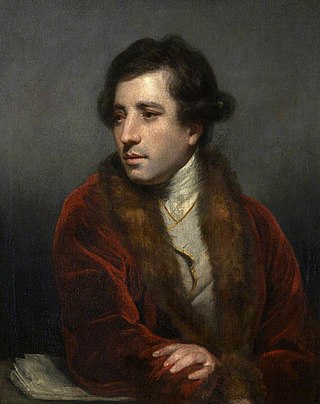
Francesco Bartolozzi was an Italian engraver, whose most productive period was spent in London. He is noted for popularizing the "crayon" method of engraving.

Marcantonio Raimondi, often called simply Marcantonio, was an Italian engraver, known for being the first important printmaker whose body of work consists largely of prints copying paintings. He is therefore a key figure in the rise of the reproductive print. He also systematized a technique of engraving that became dominant in Italy and elsewhere. His collaboration with Raphael greatly helped his career, and he continued to exploit Raphael's works after the painter's death in 1520, playing a large part in spreading High Renaissance styles across Europe. Much of the biographical information we have comes from his life, the only one of a printmaker, in Vasari's Lives of the Artists.

Giovanni Francesco Grimaldi was an Italian painter, draughtsman, printmaker and architect. He was an accomplished fresco painter of classical landscapes which were popular with leading Roman families.

Girolamo Francesco Maria Mazzola, also known as Francesco Mazzola or, more commonly, as Parmigianino, was an Italian Mannerist painter and printmaker active in Florence, Rome, Bologna, and his native city of Parma. His work is characterized by a "refined sensuality" and often elongation of forms and includes Vision of Saint Jerome (1527) and the iconic if somewhat anomalous Madonna with the Long Neck (1534), and he remains the best known artist of the first generation whose whole careers fall into the Mannerist period.

Jacopo Caraglio, Giovanni Jacopo Caraglio or Gian Giacomo Caraglio known also as Jacobus Parmensis and Jacobus Veronensis was an Italian engraver, goldsmith and medallist, born at Verona or Parma. His career falls easily into two rather different halves: he worked in Rome from 1526 or earlier as an engraver in collaboration with leading artists, and then in Venice, before moving to spend the rest of his life as a court goldsmith in Poland, where he died.
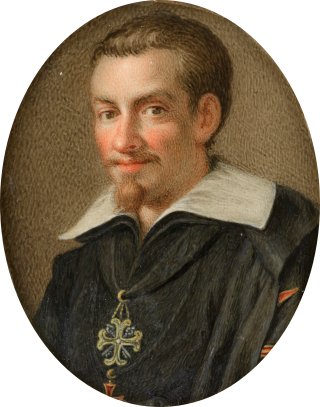
Francesco Vanni was an Italian painter, draughtsman, printmaker, publisher and printer active in Rome and his native city of Siena.
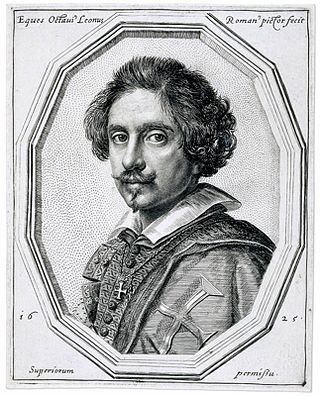
Ottavio Leoni was an Italian painter and printmaker of the early-Baroque, active mainly in Rome.
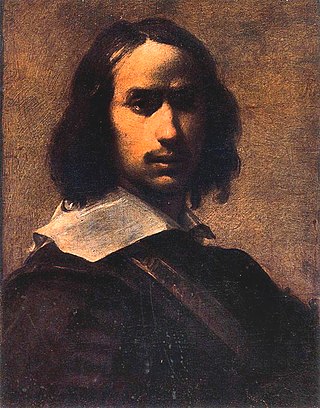
Francesco Cairo, also known as Francesco del Cairo, was an Italian Baroque painter active in Lombardy and Piedmont.
Pietro Francesco Alberti (1584–1638) was an Italian painter and engraver for the late-Renaissance and early-Baroque periods.

Giovanni Battista Casanova was an Italian painter and printmaker of the Neoclassic period.
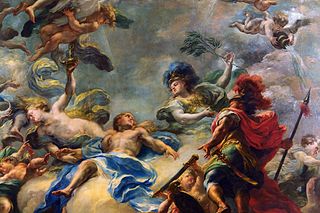
Giacomo del Pò, also spelled del Po, was an Italian painter of the Baroque. He was born in Palermo, the son of Pietro del Pò who was also his teacher.

Tarot card reading is a form of cartomancy whereby practitioners use tarot cards to purportedly gain insight into the past, present or future. They formulate a question, then draw cards to interpret them for this end. A traditional tarot deck consists of 78 cards, which can be split into two groups, the Major Arcana and Minor Arcana. French-suited playing cards can also be used; as can any card system with suits assigned to identifiable elements.
The Playing-Card is a quarterly publication, publishing scholarly articles covering all aspects of playing cards and of the games played with them, produced by the International Playing-Card Society (IPCS). The Playing-Card's articles are mostly in English, but also in French, German, Italian, and Spanish.
Nicolaus van Aelst was a Flemish engraver and perhaps painter, and a resident of Rome.

Jean Barbault was a French painter, etcher and printmaker, who worked in Rome for most of his life. He is noted for paintings of local people, wearing traditional costumes or Oriental costumes and for his work documenting iconic Roman monuments and antiquities which were published in two volumes.
Claudio Francesco Beaumont was an Italian painter, active in a late baroque-style mostly in the Piedmont region.

Antoine Bouzonnet-Stella was a French painter and printmaker, a pupil and nephew of Jacques Stella.
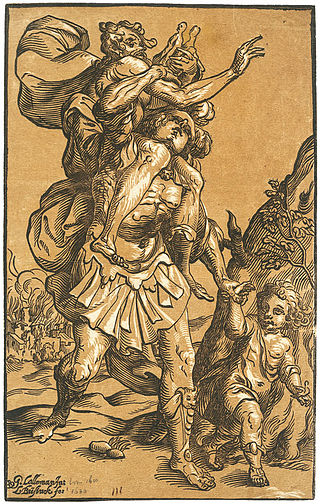
Ludolph Büsinck (c.1600–1669) was a German painter and wood-engraver, born at Hann. Münden in the 1590s. He worked in Paris between 1623 and 1630, where he produced a series of chiaoscuro woodcuts, the first to be made in France. His name is sometimes spelled "Buesinck".
Jacques Chéreau was a portrait engraver, printmaker and publisher of optical prints in a neighborhood of printmakers at the Rue Saint-Jacques variously given on prints as "au Grand St. Remy," "au Coq," or "au dessus de la Fontaine St. Severin", in Paris, France.

Philippe Thomassin was a French engraver and publisher who emigrated to Rome. He was born in Troyes on 28 January 1562 and died on 12 May 1622 in Rome.
References
- Dillon, Gianvittorio A (1990). "DENANTO (de Nanto, da Nanto), Francesco". Dizionario Biografico degli Italiani. Vol. 38.
- Thierry Depaulis, ‘From Savoy to Rome: De Nanto, a neglected printmaker of the early 16th century’, Print Quarterly , vol. XXXVII, no. 2 (June 2020), pp. 123–139.
- Michael Bury, 'Francesco de Nanto in Rome 1524-26: New Documents', Print Quarterly , vol. XXXVIII, no. 2 (June 2021), pp. 180-183. This includes an Appendix of Documents.
Attribution:
 This article incorporates text from a publication now in the public domain : Bryan, Michael (1886). "Denanto, Francesco". In Graves, Robert Edmund (ed.). Bryan's Dictionary of Painters and Engravers (A–K). Vol. I (3rd ed.). London: George Bell & Sons.
This article incorporates text from a publication now in the public domain : Bryan, Michael (1886). "Denanto, Francesco". In Graves, Robert Edmund (ed.). Bryan's Dictionary of Painters and Engravers (A–K). Vol. I (3rd ed.). London: George Bell & Sons.